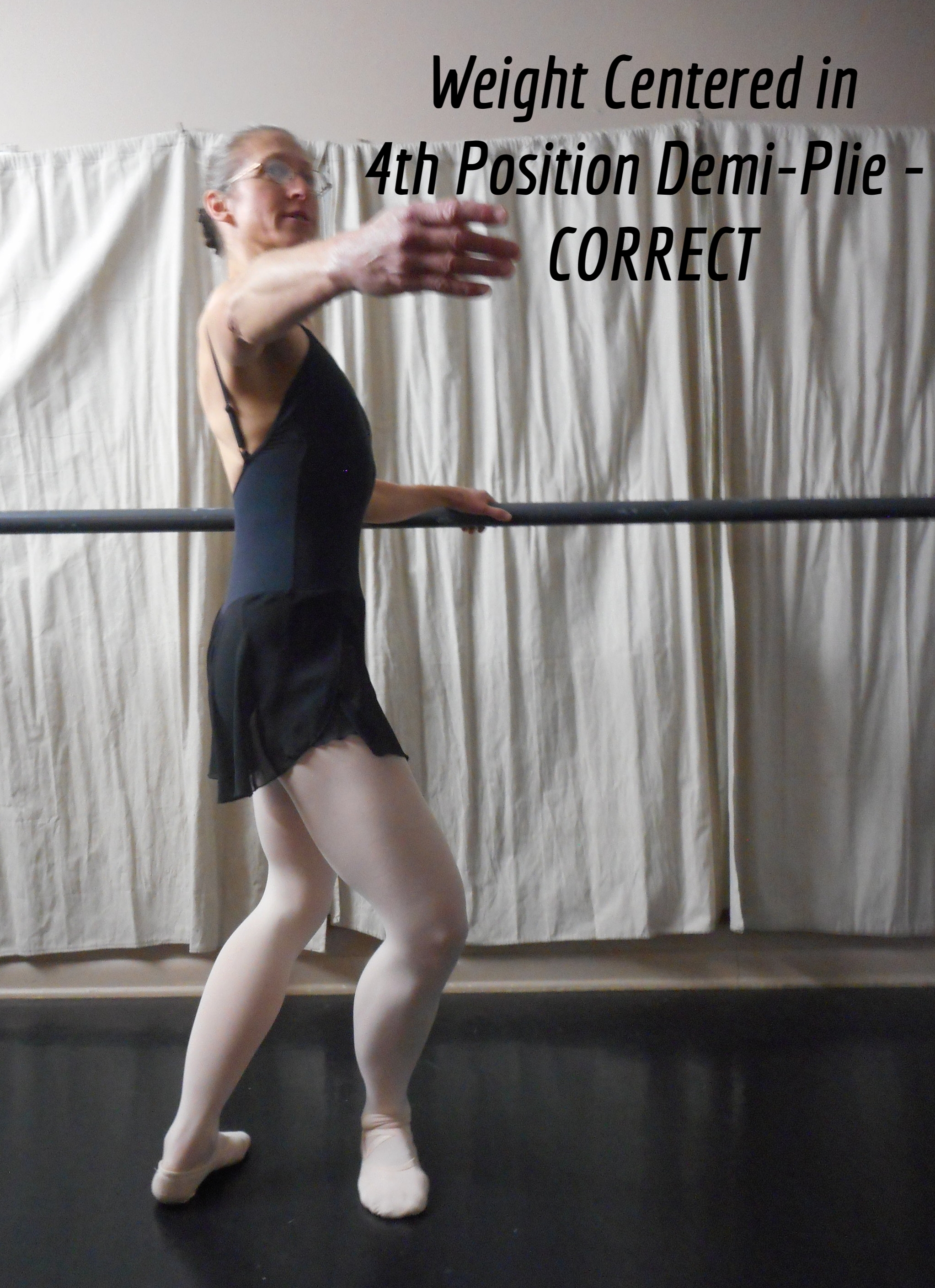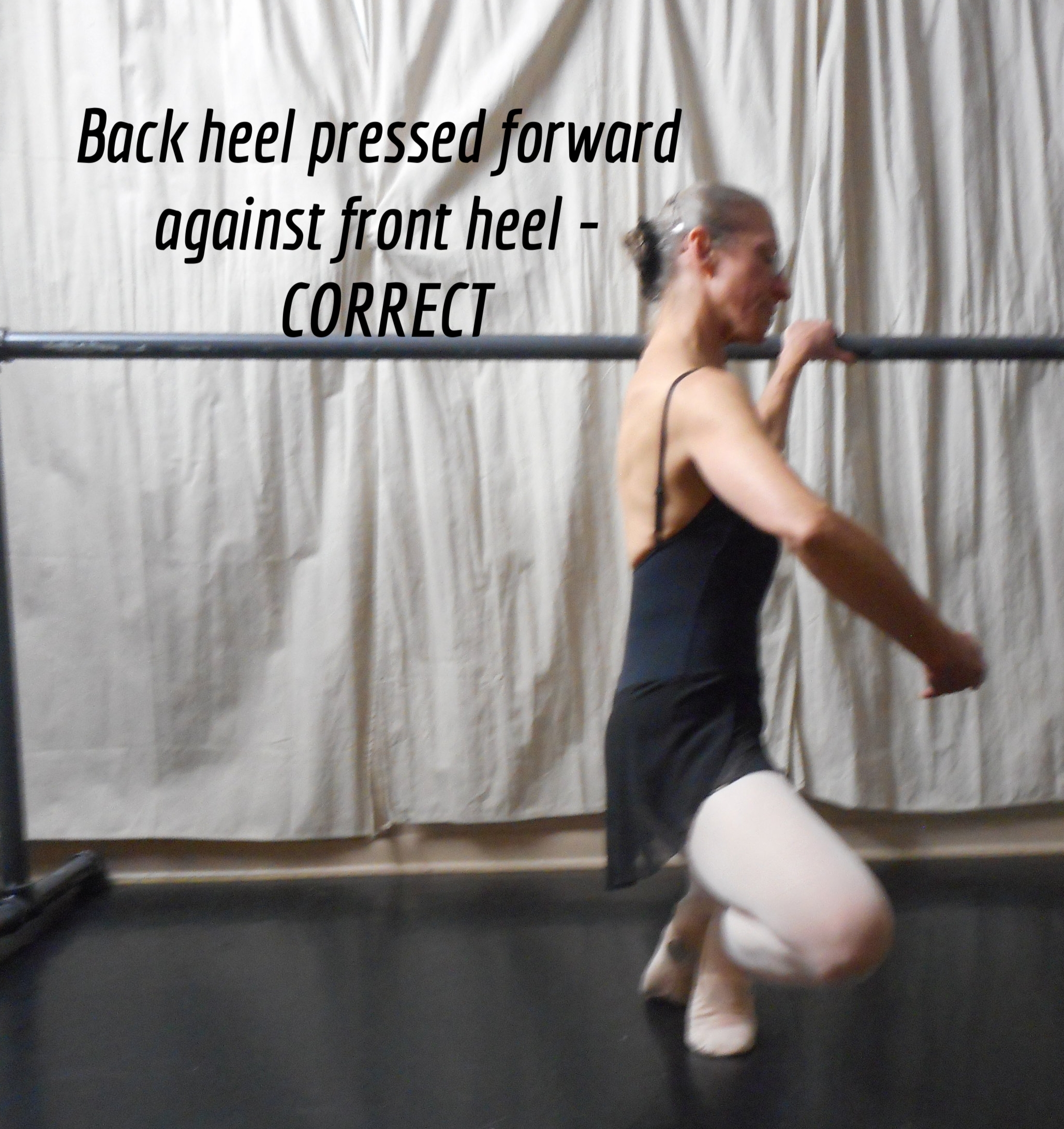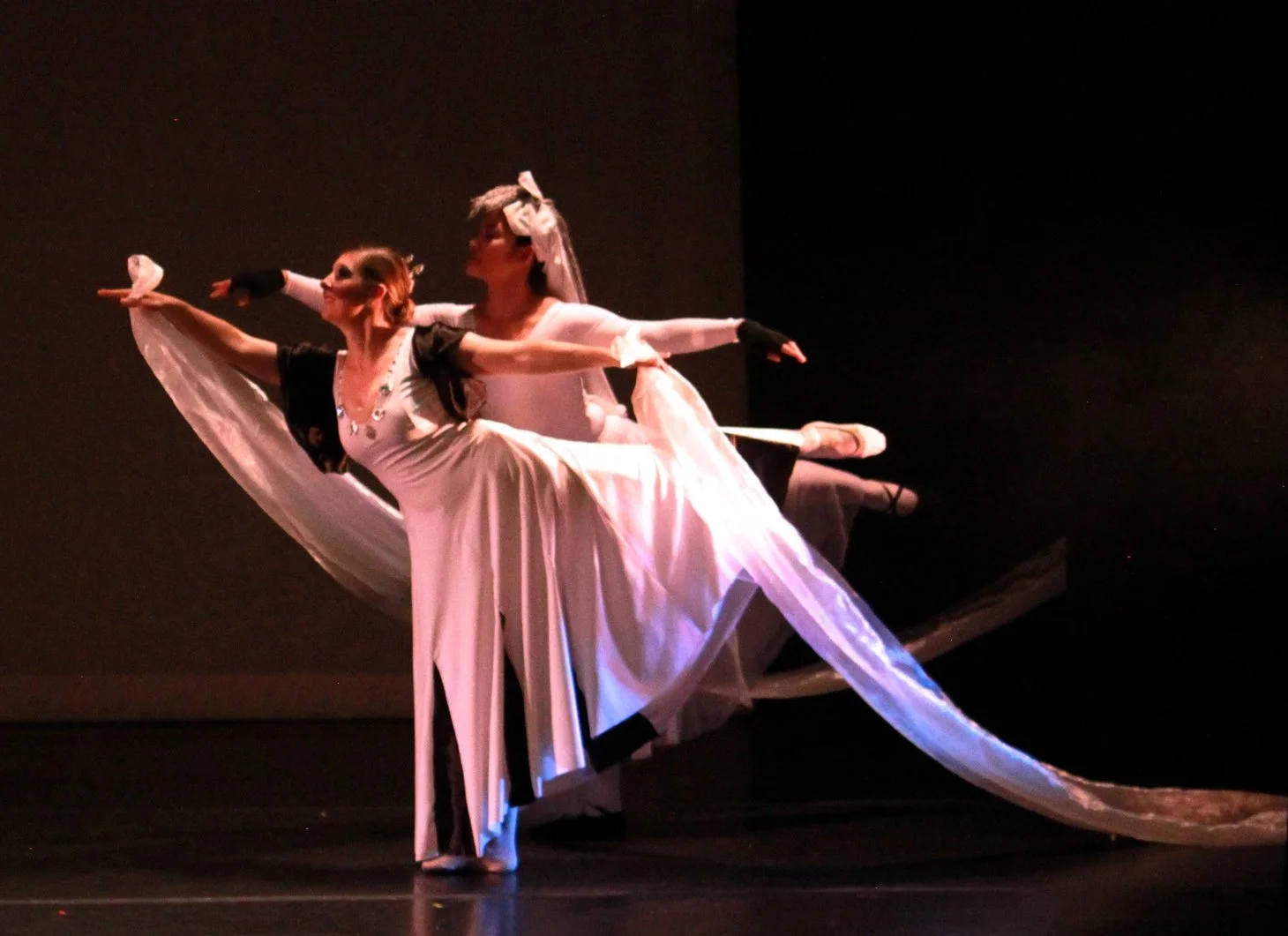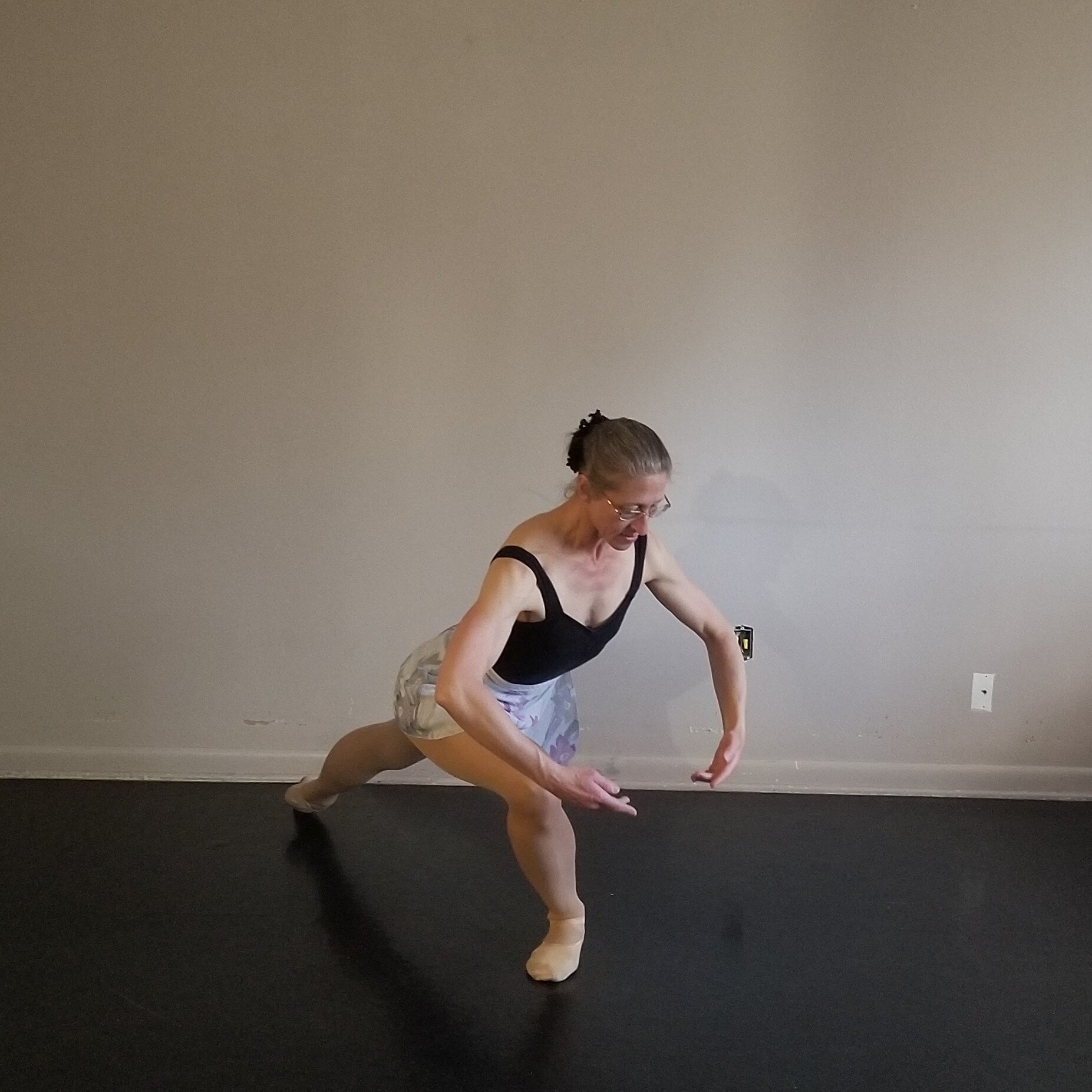
FRCBA BLOG
The Ups and Downs of Demi and Grand Plies
No wonder ballet is good for the brain as well as strengthening the body!!! Step up to the barre and into the meditative practice of your perfectly executed pliés.
Pliés are one of the most important movements in ballet – they appear virtually everywhere! The start and end of every jump, every turn, transitions from one position to another… A correctly executed plié can be a major player in the pursuit of a long, injury-free life of dancing. It is one of the first movements you learn in ballet, and one you will practice in its very own exercise towards the beginning of every class, no matter how advanced a level you attain. Its importance cannot be over-emphasized. Nor can the importance of doing your pliés correctly!
Let’s begin with demi-pliés. These are the “half bends” we do in all five foot positions, where the heels always remain connected to the floor. It is important here to focus on maintaining proper body alignment and not allowing the tailbone either to “tuck under” or to be released backward. The pelvis should remain in a neutral position under the shoulders, allowing for the gentle natural curve of the lower back to be retained. The front of the hip from thigh to low abdominals should be a straight line, not an acute or obtuse angle. The weight must remain equal on the two feet in every position – a more difficult task in 4th position than in the others.
Knees should be actively pressed open such that one feels turnout muscles engaging inside and around the hip joints. Failure to use the full degree of turnout in plié sets your body up for injury. Knees and ankle joints can find themselves without appropriate muscular support and misaligned into angles that can wear them down, put undue strain on tendons and ligaments and cause cartilage damage. Throughout the demi plié, all ten toes should have equal pressure into the floor such that the arches of the feet remain lifted.
The movement of a plié should be smooth and continuous, not choppy. When one reaches the bottom of the plié, the ascent should begin immediately. The timing of the descent and the ascent should generally be equal.
While the knees are descending into a plié, the dancer should feel that the body is being actively lifted upward and out of the hips, such that there is a constant feeling of lengthening even as the dancer is going lower. This has the effect of taking some of the feeling of heaviness out of the legs.
Now let’s address the more advanced movement of Grand Plié. This movement should not be introduced in young children’s classes until the students have fully mastered the demi plié as the grand plié requires a great deal more strength and body awareness and can be more harmful to the body than a demi plié if done incorrectly. If introduced carefully with proper instruction and with dancers facing the barre, an attentive teacher can safely teach the grand plié to older youth, young adults and very strong mid to older adults in a beginning class. Older adults who do not have a lot of muscular strength should not go far into a grand plié until they have developed greater strength and technique awareness. In some cases, they can be taught to go into a shallow grand plié with heels just barely off the floor, possibly deepening the movement gradually as they become stronger. Aside from keeping the heels on the floor, all of the above technique pointers given above for demi pliés hold true also for grand plié… and there are even more details to think about!
Grand pliés in 2nd position are the least strenuous for the body and present the least chance of causing injury if done incorrectly. In 2nd position, even in a grand plié, the heels remain connected to the floor. It is the only position in which this is the case. It is acceptable to let the feet be slightly wider apart in a 2nd position grand plié than in a demi plié, but they must be brought back in to their usual 2nd position distance (1 foot length apart) upon return from the bottom of the plié. In 2nd position grand plié it is important to work towards keeping the hips forward between the knees. This engages the full use of the turnout and there should be a feeling of a stretch on the front of the hip joint if done correctly. The hips at the bottom of the grand plié in 2nd position should be equal with the level of the knees. Under no circumstances should the hips go below the knees, although it may take some time before a beginning dancer has the strength to bring his/her hips down to knee level while maintaining the proper alignment through the spine and while keeping the hips forward with full use of turnout.
Grand pliés in 1st position present the next level of difficulty. In this position, the heels do leave the floor once the dancer has achieved the full depth of the proper demi plié. The heels are not forcibly pushed up, but rather are released from the ground as the plié deepens. They should never come further off the floor than necessary in the grand plié, and one should not find oneself in a virtual relevé at the bottom of the plié. During the portion of the plié when the heels are off the floor, body weight should be distributed between the first and second toes of both feet such that the heels are pressed forward, assisting in the maximization of the turnout. The dancer must be particularly vigilant to maintain correct body alignment as the plié deepens. The spine should remain on a vertical axis with no pitching forward of the shoulders, nor any tilting backwards or forwards in the pelvis. This requires a great deal of strength in the quadriceps and muscles surrounding the knee joints. The return from the bottom of the grand plié to the demi plié must be initiated by pressing the heels back towards the floor such that the full depth of the demi plié is achieved with heels reconnected to the floor before the knees stretch out of the plié altogether. The vertical axis of the spine must be maintained throughout. The bottom of a grand plié should never involve “sitting” at the bottom. The leg muscles must remain strongly engaged throughout the movement and the plie should involve continuous motion.
Grand pliés in 3rd and 5th positions are a step up in difficulty from those in 1st position because the base of support is smaller. All that is true about the technique of a grand plié in 1st position holds true for these positions as well. Additionally, the dancer must think about pressing the back heel forward while descending from the demi into the grand plié such that at the bottom, the heels of the two feet are touching one another. This helps to activate the full degree of turnout while also preventing the back foot from sickling.
Grand pliés in 4th position should be reserved for very strong and experienced dancers who have tremendous self-awareness and bodily control. While concentrating on all of the technique discussed for grand pliés in 1st, 3rd and 5th positions, the dancer working in 4th position must also maintain “square” shoulders and hips meaning that there is no twist in the body and that the shoulders and hip bones all equally face forward throughout the movement. Additionally, in 4th position, it is more difficult to maintain the turnout of the back leg, and care must be taken not to allow the back knee to “drop” inward. Both knees must be pressed actively open throughout the movement and hips must be aligned evenly between the two feet.
Phew! That’s a lot to think about for your first or second exercise of a ballet class! No wonder ballet is good for the brain as well as strengthening the body!!! And no wonder ballet can act as a sort of meditation while it takes your mind off everything else in life because it requires every ounce of concentration just to do every single movement! But don’t feel discouraged, eventually after enough practice most of it becomes second nature and you won’t have to think about every single detail anymore. Just remember how strong and beautiful your mind and body are growing as you enjoy the music and camaraderie of your classmates. Step up to the barre and into the meditative practice of your perfectly executed pliés. Let the music begin!
Building Community with Dance
No words are necessary- just the movement is enough to speak deeply of who we are and for others to respond – a universal language that often cannot even be translated into words, but which moves us and brings us together.
Goddess Counsel May 2018;
Photo by Bebelliet Studios
In a couple of weeks, I shall have the opportunity to experience this in a heightened way. I will be participating as an instructor at the DANCE BEYOND the LIMITS event – a second annual “Inclusive Dance Convening” produced by Dance Express. Open to all people, this event will be an opportunity to share the experience of dance with people who have various disabilities, both physical and intellectual. Last year, while visiting cousins in California who have a daughter with severe mental disabilities, I had the wonderful experience of attending with them a church service for people of different abilities. At this service, an older gentleman took my hands and danced with me to the music that was being played before the service. It was clear how much this connection meant to him as he had no ability to speak in words, but he was able to connect and share meaning through movement.
It is my hope that FRCBA is a place where people come to find a part of themselves, through movement, through artistic expression, through the meditation of deep concentration on the rigors of ballet technique, but also a place where people come to find community and connection with others. In sharing this experience that can touch deeply to the human soul, we can connect with others sometimes in ways that are difficult with words, but organic through movement. Perhaps this is why dance is such an integral part of nearly every human society on the planet. No words are necessary- just the movement is enough to speak deeply of who we are and for others to respond – a universal language that often cannot even be translated into words, but which moves us and brings us together.
The Space Between May 2018;
Photo by Bebelliet Studios
All are welcome at this event, and I would encourage any who are interested to take this opportunity to share movement with the broader community in which we live, but with whom we rarely have the opportunity to connect. The event takes place Saturday, Oct. 6 from 8:30 am to 4:30 pm at Club Tico. For tickets call: 970-493-2113. For scheduling, pricing, and registration go to http://www.danceexpressfc.com/upcoming-events.php.
FRCBA Dancers Around the World
We are infected with the joy and love of ballet everywhere we go!
Leah Casper - Brooklyn Bridge
Kim Tsao - Japan
Laurel Johnson - Cornwall, England
Don't worry, if you haven't had a chance to send in your photos yet, it isn't too late! We are planning to add a photo page to the website with all these and more fabulous photos of FRCBA's beautiful dancers during their travels. So, please, keep the photos coming!
Mary Chen - Reverence on the ice in Iceland
For many of us, summer is a time for travel and vacation, a time for new experiences in new places, time with family and friends we might not see very often. FRCBA dancers have traveled to a host of fascinating places. And wherever they go, they are compelled to appear in ballet poses for their photos! We are infected with the joy and love of ballet! Here are a few photos of the many wonderful fun adventures FRCBA dancers have shared.
Vanya Paul - Lee Martinez Park
Jayme Tilley - on a cruise!
Theresa Cordova - Copper Mountain
Independence
May your Independence Day be full with Life, Liberty and the Pursuit of Happiness and the effort to share this ideal with all humanity.
Independence Day… At the birth of our nation, it was declared that all should have equal rights to life, liberty, and the pursuit of happiness. Not that these rights have been offered to everyone even in our own country since that great Declaration… It has been and continues to be a struggle to grant those equal rights to each and every human. But that these words lie at the bedrock of our young country is a source of hope – an ideal towards which we must continue to strive.
Photo by Bebelliet Studio
Independence. It is what every artist seeks in order to create their art. Often on the fringes of society, artists push the boundaries of the community comfort zone, alerting others to what is just outside their daily range of experience or on the edges of their sightlines. Changes in society can often be fore-shadowed by the artists of the day.
Photo by Kristina Wood Photography
Photo by Bebelliet Studio
Independence. It is what every teenager yearns towards. That freedom to discover and become who they wish to be, that freedom from the constraints of parental rules, freedom to drive, to live on their own. As parents, we prepare our children for their personal Independence Day by nurturing and loving them, teaching them what we think is important, instilling confidence, allowing them to make inevitable mistakes and feel the consequences, and eventually letting go and standing by in the wings – ready to help if we are needed.
Photo by Bebelliet Studio
Independence. It is a teacher’s goal for her students, a choreographer’s goal for his dancers. My hope for my students and my dancers is that they find the ability to step beyond what has been taught to them in the studio, jete and pirouette into their own expressions to share their abundant beauty of spirit with the world.
May your Independence Day be full with Life, Liberty and the Pursuit of Happiness and the effort to share this ideal with all humanity.
Soul Connection
Performance is the moment when the art of ballet has the opportunity to make connection with the outside world. […] The dimensions of communication from human to human conveyed through art is beyond what we would be capable of without it. Our souls respond with depth to the messages borne through art.
On May 26 and 27, FRCBA dancers of all ages and all levels of training graced the Lincoln Center Magnolia Theatre stage, telling stories in movement, inviting the audience into the world of a child’s nightmares, dreams and hopes. Moon Beam Rider and Other Works was a resounding success! How wonderful to see the hard work and cooperation of so many people come to fruition!
Performance is the moment when the art of ballet has the opportunity to make connection with the outside world. Dancing in class and in rehearsal can be of great satisfaction – and even necessary to the well-being of an individual. Just as poets, musicians, painters and sculptors undoubtedly feel compelled to create their art and cannot be whole without it, so it is with dancers. But until their creations are seen or heard by the outside world, artists cannot make connection through their art.
Photos courtesy of Bebelliet Studios www.bebellietstudio.com
I have always felt that art is about making connection, although the act of performance is not always something I particularly enjoy. I understand it as a gift and as a necessity. The dimensions of communication from human to human conveyed through art is beyond what we would be capable of without it. Our souls respond with depth to the messages borne through art.
So, I thank all of the artists who were a part of this performance for having the strength and fortitude to persist through the challenges that were faced in a multitude of ways and for gifting this performance to our audiences. I hope that meaningful connections were made and that in the souls of performers and audience alike, the experience will echo for a long time to come.
















































